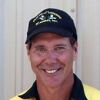I’m often asked about my favorite drills to do at the range. I’ve designed many different drills and exercises during my years as a professional trainer and shooter. I have a complete spectrum of targets that I use for different shooting drills that are available for download.
But drills don’t do all of the teaching. Targets don’t do all of the teaching, either. They provide a challenge and give you feedback on your results. But if you truly want to improve, you must be able to think and create the performance you want to achieve and then visualize and hold that visualization in your head while shooting.
You work on conscious control of it until you can automate it into the subconscious. However, far too many people think that subconscious competence is the highest level of skill. This isn’t so.
“Think, Don’t Plink”
For true mastery, you must become aware of what you’re doing as you’re doing it without consciously trying to control it. You learn to become aware of and monitor your performance. When I am shooting correctly at this level I can feel my grip, platform, trigger movement, and process my sights. I can see the brass coming out of the gun and, in rare cases, sometimes see the print on the back of the cartridge case as it comes out. I can’t read it, but I can remember seeing it.
In his book The New Mental Toughness Training for Sports, Dr. James Loehr describes this level of focus as Level One Awareness. It is an integral part of the state of flow and is far higher in skill and application than subconscious competence.
The target may help focus your awareness of where the shots are going. But if you’re not thinking about the desired performance beforehand — staying aware while you are shooting and receiving feedback while you are shooting — then you’re just plinking.
Pretty soon, you drift back to practicing whatever shooting you always do with generally the same results when you are put under pressure.
A classic example is my trigger stripe target drill. Here we have a narrow strip down the center of a rectangle that focuses your attention precisely on hitting it by pressing the trigger straight to the rear. I can change the speed of the drill, the distance or any number of variables and make a bunch of different drills. But if you don’t think about — and pay precise attention to — how you are moving your finger and where you are putting the pressure, you may gain some subconscious skill, but you won’t have learned much on a conscious level about how you have to do it. Then, when you’re given a variety of training challenges and you start making mistakes with the trigger control, you won’t be able to figure out what you’re doing wrong.
For high-performance firearms training, you must understand the principles of what you’re doing and you must then apply those principles — this means you have to think. You have to become aware. You have to learn to process what you’re doing and seeing while you’re doing the task. Only then can you truly learn. This type of training is necessary in order to gain mastery. This is what you must do while shooting any drill.
Tailoring Your Teaching
My favorite drills are about principle application. I design drills on the spot. I decide what I want to work on and then, using my imagination, create the new performance I want. I then make a drill for that aspect of performance and focus my attention on the new performance I’ve visualized and execute it with as much awareness as I can while shooting the drill. I start slow and then increase the challenge as I get better.
If I have a student with a particular problem, I’ll analyze the problem, determine the level and type of remediation, and design a drill for them. I then focus their attention on the aspect of performance that needs correction and have them shoot the drill with proper attentional focus until they understand the correction and can do it on a conscious level.
You can do the same thing for yourself. You must first have a fundamental understanding of the principles and concepts involved in high-performance shooting and then learn to focus your attention on your own performance.
This isn’t easy, but it is the only way to permanent learning on both a conscious and subconscious level. On a high-performance level, it allows for processing and correction in the moment because your awareness lets you monitor your performance without consciously trying to control it.


